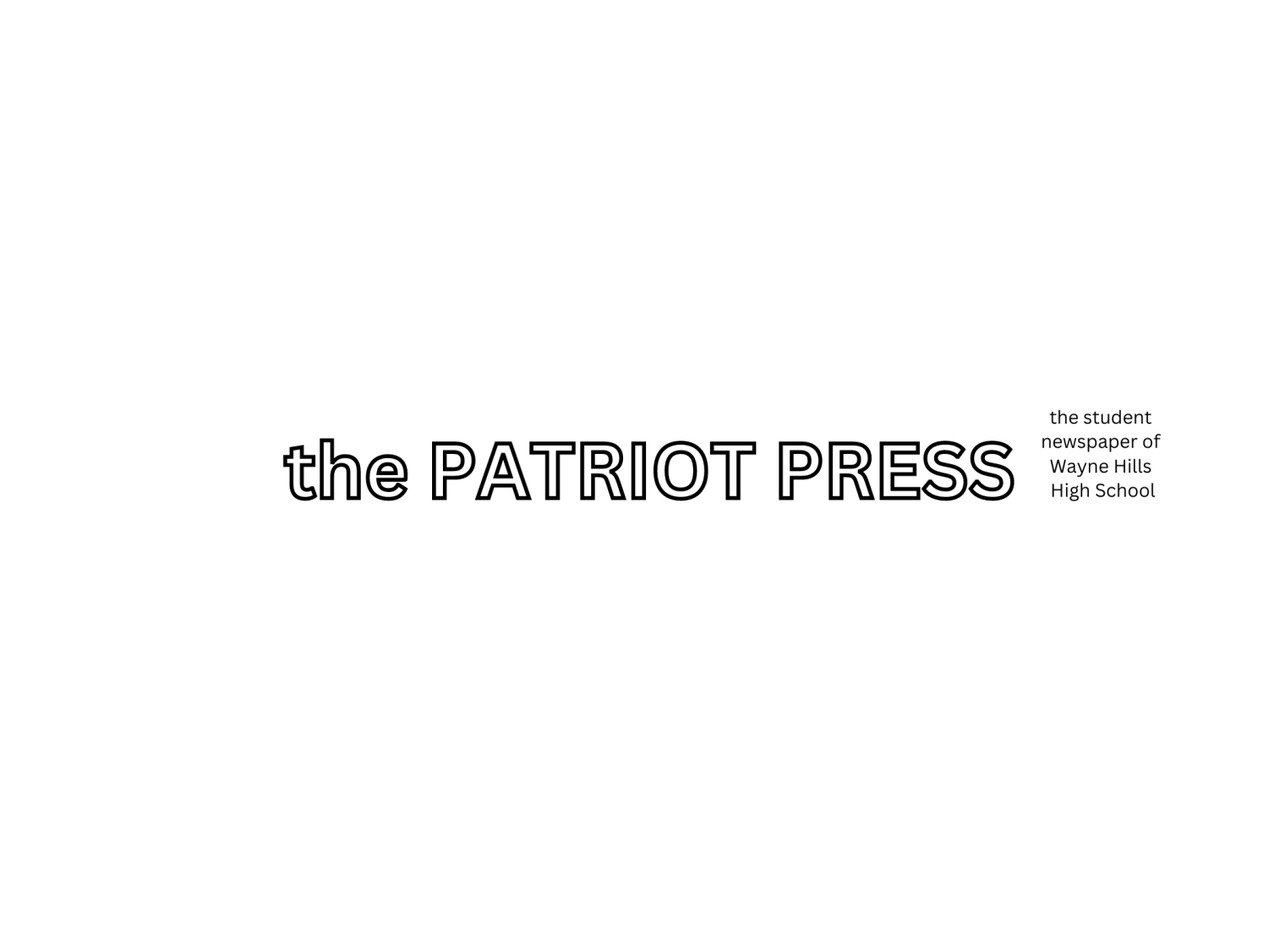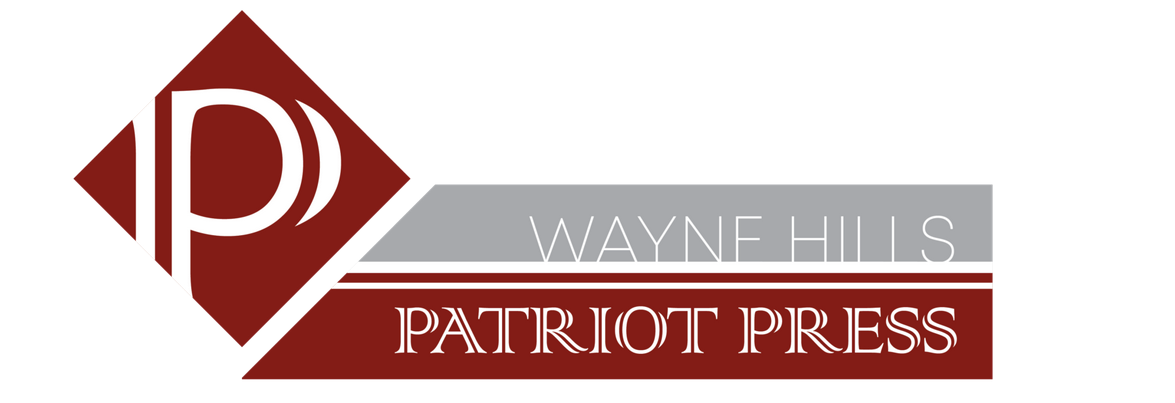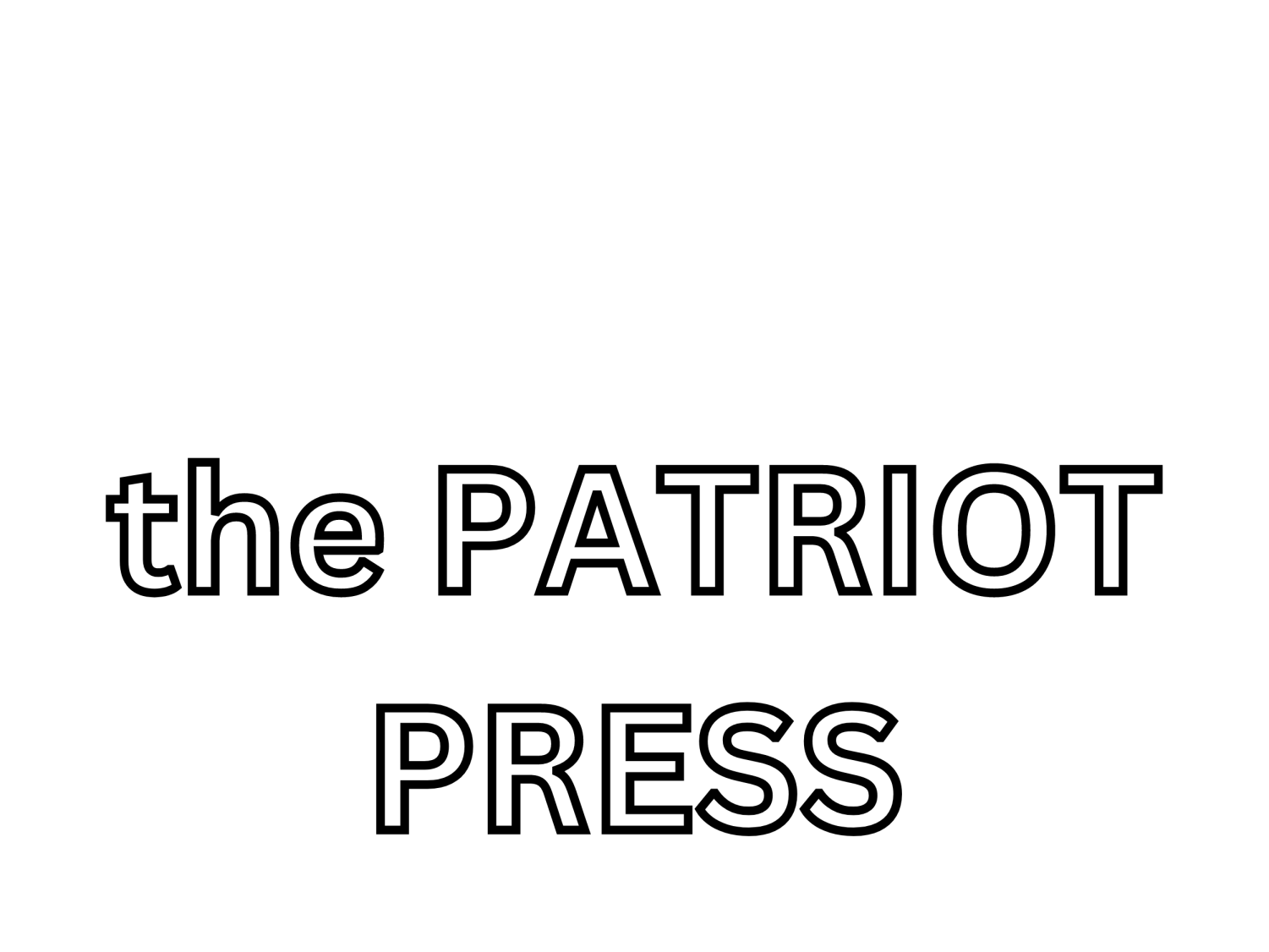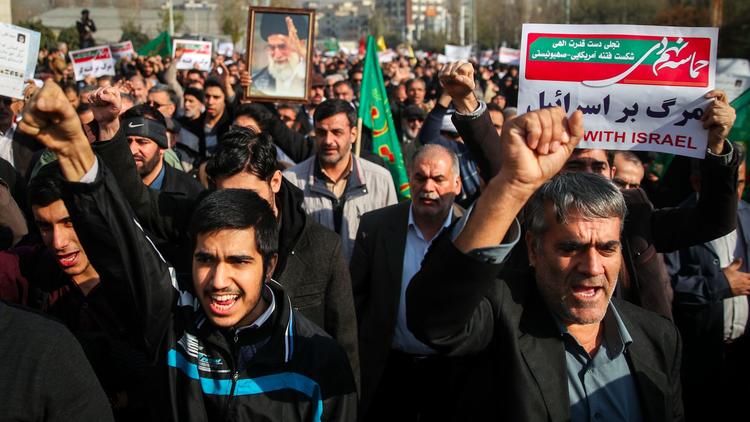Unrest Mounts in Iran as Death Toll Rises to 21
More stories from Joe Mezza
Unprecedented anti-government protests have swept across Iran recently, drawing the country’s largest crowds since the 1979 revolution.
The protests began small on December 28 in the city of Mashhad but have since grown in size and scope, spreading across the Iranian provinces. However, Tehran, the nation’s capital, has seen relatively few protesters.
Most of the protesters are young men from rural towns and cities; these are not the same middle-class individuals who took to the streets in Iran in 2009 after a disputed election. Though rural, pious Iranians once provided the backbone of support for the government, the political, social, and economic climate in the country has changed. These young demonstrators contend their government has manipulated the economy to benefit the ruling politicians and theocracy at the expense of working-class people like themselves. Many are also expressing a desire to have the government focus on domestic affairs and not proxy wars in countries such as Syria, Gaza, and Lebanon. Their concerns have their basis in a proposed government budget from President Hassan Rouhani, which, according to The New York Times, would allocate billions of dollars to “hard-line organizations, the military, the Islamic Revolutionary Guard Corps, and religious foundations that enrich the clerical elite.”
Although the government’s response was initially limited, security forces are now attempting to quell the protests. Since December 28, the death toll has risen to 21, including several security officers. Arrests number 450 in Tehran alone and are likely much higher in the provinces. While President Rouhani, a moderate and reformist, has called for peace but admitted the protesters have a right to speak their minds, the Supreme Leader Ali Khamenei condemned the protests and on January 2 even accused them of being led by foreign influencers. In a post on Twitter, Ayatollah Khamenei claimed that “In recent events, enemies of #Iran have allied & used the various means they possess, including money, weapons, politics &intelligence services, to trouble the Islamic Republic. The enemy is always looking for an opportunity & any crevice to infiltrate &strike the Iranian nation.”
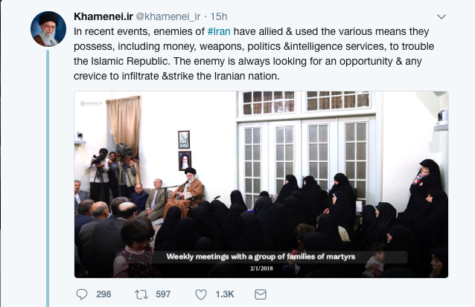
Chants for the deaths of both these men are among the rallying cries of the protesters.
The US has called Khamenei’s claims that a foreign power is involved in the protests “complete nonsense” and President Trump has expressed support for protesters in a string of tweets that heavily criticized Iran’s “brutal and corrupt” government and the 2015 US-Iran nuclear deal.
The modern Iranian government was created in 1979 when, during the aforementioned revolution, Mohammad Reza Shah, a US-backed monarch, was ousted and the nation voted to become an Islamic republic. It was led by the late Ayatollah Khomeini until 1989 when Khamenei took power. The country has an elected president as well, but most of the power is in the hands of the Supreme Leader and other religious clerics.
